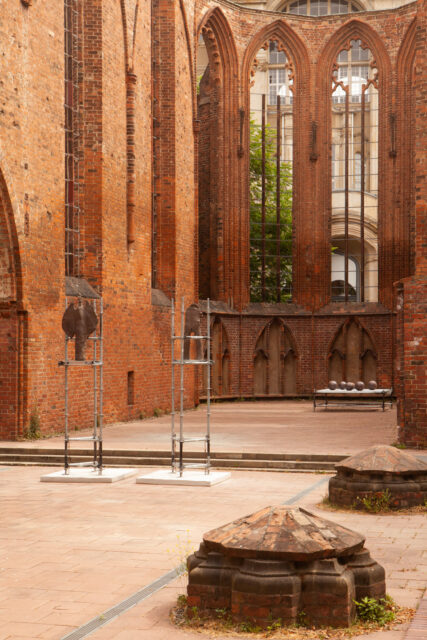From Franciscan monastery church to memorial and exhibition place of contemporary art
750 years of history of Klosterruine Berlin
Chapters
Architecture and building history
Station 1
The beginning of the monastery church is closely connected with the settlement in the area of the Mark Brandenburg in the 13th century. In 1271, the margraves of Brandenburg provided the mendicant Franciscan order with a building plot on the eastern edge of what was then Berlin. In 1290, a brickyard located nearby Tempelhof was additionally donated to them by the knight Jacob von Nebede. A fieldstone building already existed on this site, which was integrated into the construction of the monastery church. Its remains can still be seen on the northern wall. The church building was extended in the last third of the 13th century and a large monastery complex was created with two courtyards on the northern side. The Franciscan monastery church is one of the early brick Gothic buildings in Brandenburg. The nave is simple and Romanesque in appearance, the long choir is Gothic in style, an unusual design for the time. The impressively windowed and tracery-decorated chancel end testifies to high artistry and a high degree of technical knowledge.

![Innenraum_Lithographie_1842-1[1]](https://cms.klosterruine.berlin/app/uploads/2023/03/Innenraum_Lithographie_1842-11-640x416.png)




![Korkmodell-1[1]](https://cms.klosterruine.berlin/app/uploads/2023/03/Korkmodell-11-640x297.png)
